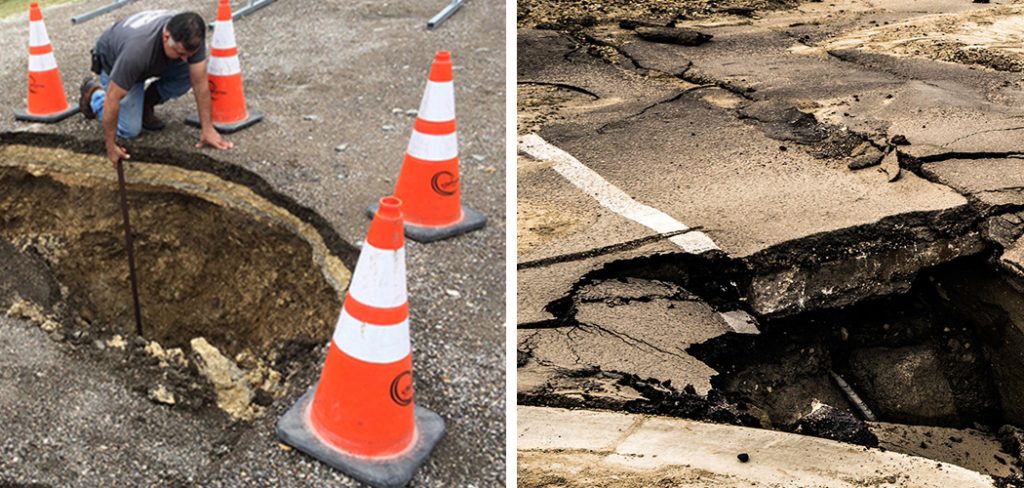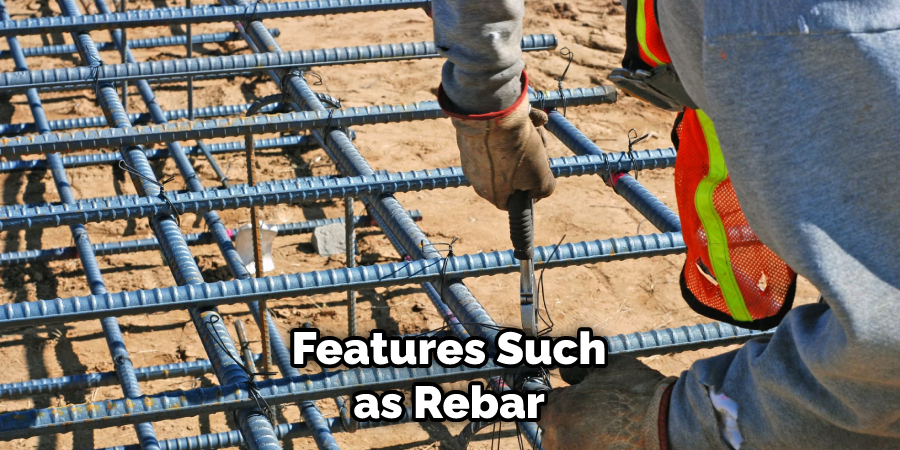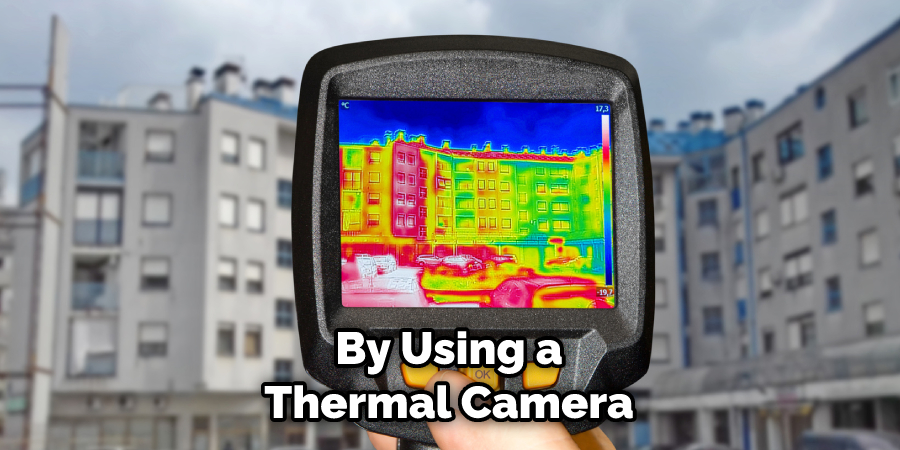For those of us in the construction industry, detecting and preparing for possible voids beneath concrete can be a huge challenge. Unfortunately, it’s only discovered after demolition or expensive repair work has occurred.
To help you prevent this from happening on your next project, let’s look at what voids are, how to detect them before doing any major repairs, and some strategies for filling in these potential problem areas.

Throughout this post, we’ll provide how to detect voids under concrete tips from professionals with experience in identifying underlying weaknesses within building structures so you can save time and money down the line.
What is Void Detection?
Void detection is the process of locating and determining the size, shape, and depth of cavities or “voids” beneath concrete surfaces. It can be done using a variety of methods, including ground-penetrating radar (GPR), thermal imaging, and acoustic tomography.
Each of these methods has its own advantages and drawbacks, making it important to choose the right technique for the job.
GPR is one the most popular methods used for void detection because it can provide accurate information about subsurface structures with minimal disruption to traffic or other activities on top of the concrete surface. This method works by using radio waves to penetrate the concrete and map out the subsurface.
The data is then analyzed to determine the location and size of voids beneath the concrete.
Thermal imaging is another useful technique for detecting voids under concrete, as hot or cold spots on a surface can indicate where a void may be located. This method works by sensing differences in surface temperatures and can be used to detect the presence of an underground void that may not otherwise be visible.
Can GPR Detect Voids?
Ground Penetrating Radar (GPR) is a powerful tool for detecting voids and other anomalies under concrete. It sends an electromagnetic signal into the ground that can penetrate through solid objects like pavement, soil, or concrete.
The signal reflects off of any buried objects, including voids, and then it is received by the antenna unit. GPR can provide a detailed image of what lies beneath the surface, making it an ideal tool for detecting voids under concrete.
GPR is very reliable when used properly. It is able to detect voids even at depths beyond one meter and can map out the size, shape, and depth of any cavities that are present. Additionally, GPR can be used to detect other features such as rebar, bends in the rebar pattern, and even moisture.

The main limitation of using GPR to detect voids under concrete is that it can be expensive and time-consuming. A technician must be trained to operate the equipment correctly and interpret the data properly. Additionally, GPR is unable to penetrate through certain materials like clay or sand, so it may not be effective in all situations.
Overall, GPR is a very useful tool for detecting voids and other anomalies under concrete. With proper training and skillful use of the equipment, GPR can provide detailed images that allow engineers to make informed decisions about their projects.
10 Methods How to Detect Voids under Concrete
1. Visual Inspection:
Visual inspection is the simplest and most basic method to detect voids under concrete. Walk around the surface and look for any signs of cracking or sinking. If you notice any unevenness in the concrete surface or cracks, this could be an indication of voids.
Even if you don’t see any visible signs of damage, this does not mean the concrete is void-free.

With experience, you can learn to recognize subtle warning signs. To detect larger voids, use tools such as a pressure gauge and depth indicator. However, if the voids are small, you may need to use a specialized instrument like a core drill.
2. Vibrating Screed:
A vibrating screed is a tool used to level and smooth concrete surfaces. It can also be used to detect voids under concrete. By running the vibrating screed over the concrete surface, any voids or low spots will become apparent as the screed will sink or dip in these areas.
The screed can then be used to fill in the voids or low spots with additional.
This method requires experience to accurately detect and fill any voids, as the screed must be handled in a precise manner to ensure accuracy. It is not recommended for large surfaces or projects due to the time required. However, it is a useful tool for small projects or areas where accuracy is important.
3. Moisture Meter:
A moisture meter is a device used to measure the moisture content of materials. When there are voids under concrete, the moisture content can be different in these areas compared to the surrounding concrete.
By using a moisture meter, you can identify any areas with higher or lower moisture content, indicating the presence of voids. Moisture meters are useful for detecting voids in concrete, as they can detect moisture content changes even when the surface of the concrete looks normal.
4. Ground Penetrating Radar:
Ground Penetrating Radar (GPR) is a non-destructive testing method that uses radar waves to create an image of the subsurface. GPR can detect voids, as they will appear as gaps or empty spaces in the image. This method is especially useful for large areas and can detect voids at different depths.
However, it can be difficult to determine the exact size and shape of voids that are detected. Additionally, GPR can only be used if there is a large enough clearance between the surface and the void to allow for proper imaging. However, this method can be used to detect large voids with relative ease in comparison to other methods.
5. Infrared Thermography:
Infrared thermography is a non-destructive testing method that uses infrared cameras to detect temperature differences in materials. When there are voids under concrete, the temperature can be different in these areas compared to the surrounding concrete.

By using an infrared camera, you can identify any areas with higher or lower temperatures, indicating the presence of voids.
You can also use this method to measure the depth of voids and their exact location, which is important information for repair or replacement. Infrared thermography is a fast and efficient testing method, and it can be used to identify voids in both interior and exterior concrete surfaces.
6. Impact Echo Testing:
Impact Echo Testing is a non-destructive testing method that uses sound waves to detect voids under concrete. A small impact is made on the surface of the concrete, and the resulting sound waves are analyzed to identify any changes in the wave patterns, which can indicate the presence of voids.
7. Ultrasonic Testing:
Ultrasonic Testing is a non-destructive testing method that uses high-frequency sound waves to detect voids under concrete. A transducer is used to send sound waves into the concrete, and the reflected waves are analyzed to identify any changes in the wave patterns, which can indicate the presence of voids.
8. Concrete Scanning:
Concrete scanning is a non-destructive testing method that uses specialized equipment to detect voids under concrete. The equipment can detect voids by using different technologies such as radar or electrical impedance. This method is especially useful for detecting voids in thick concrete slabs.
The radar device is moved over the concrete surface and produces an image that shows any anomalies in the structure. Electrical impedance equipment works by passing a small electrical current through the concrete surface and then measuring the resulting electrical resistance.
9. Load Testing:
Load testing involves applying a load to the concrete surface and measuring any deflection or deformation. This method can help to identify any areas with low strength, which could be an indication of voids. It can also help to identify any areas that are weaker than the surrounding concrete.
Load testing should be done after initial surface checks, such as visual inspection and hammer sounding, to confirm the presence of any voids. Load testing should also be done in accordance with local regulations. For example, some jurisdictions may require load tests to be done with a specific amount of weight or pressure.
10. Thermal Imaging:
Thermal imaging is a non-destructive testing method that uses infrared cameras to detect temperature differences in materials. When there are voids under concrete, the temperature can be different in these areas compared to the surrounding concrete.

By using a thermal camera, you can identify any areas with higher or lower temperatures, indicating the presence of voids.
Conclusion
In conclusion, detecting voids under concrete requires the implementation of several sophisticated techniques. After suspending the slab, seismic measurements or the use of ground-penetrating radar should be used to determine the presence and size of any voids underneath concrete slabs or walls.
Ultrasonic testing may also help in accurately measuring the shapes and thicknesses of soil layers located near a structure’s foundation. If you have any other questions about how to detect voids under concrete, or if you want to learn more about detecting voids under concrete, be sure to check out our other blog posts. Thanks for reading!
